In his first speech as Leader of Opposition in Lok Sabha, Rahul Gandhi invoked the Abhaya mudra, the gesture of the raised open palm that is commonly understood as conveying reassurance and a freedom from fear.
- The Leader of Opposition linked the symbolic image of ‘Abhaya Mudra’ to criticise the Central government
Mudras in Buddhism: Significance and Historical Context
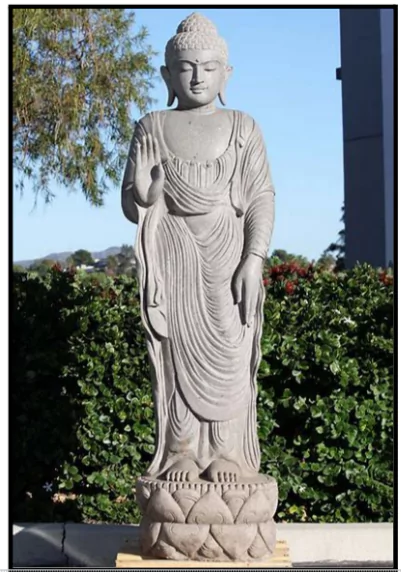
- Definition: Mudras in Buddhism refer to “hand and arm gestures made during ritual practice or depicted in images of buddhas, bodhisattvas, tantric deities, and other Buddhist figures.”
- Significance of Mudra: Mudras signify different moods and meanings, conveying the subtle manifestations of the Buddha’s states of realisation.
- Found in several religions: This is one of the earliest mudras found depicted on a number of Hindu, Buddhist, Jain, and Sikh images.
- Association: Mudras are most commonly associated with visual depictions of the Buddha (Buddharupa).
- Historical Context:
- Buddha not depicted in Human Form: For about 500 years after the Buddha (6th or 5th Century BCE), he was not depicted in human form.
- Buddha symbolised by objects: At early Buddhist sites like Sanchi, the Buddha is symbolised by objects such as a vacant throne or a footprint, rather than a direct human image.
Enroll now for UPSC Online Course
Evolution and Significance of Mudras in Buddhist Iconography
- Early Physical Depictions of Buddha: The earliest physical depictions of the Buddha date to around the turn of the first millennium.
- It began in the Gandhara region (present-day Pakistan and Afghanistan), influenced by Hellenistic art.
- Later depictions appeared in the Gupta period art in the Gangetic plains of India.
- In the earliest depictions of Buddharupa, four mudras can be found:
- Abhaya Mudra: Gesture of fearlessness.
- Bhumisparsha Mudra: Earth-touching gesture.
- Dharmachakra Mudra: Gesture of the wheel of dharma.
- Dhyana Mudra: Gesture of meditation.
- Proliferation of Mudras:
- Rise of Mahayana and Vajrayana Buddhism: With the rise of Mahayana (Greater Vehicle) and Vajrayana (Thunderbolt Vehicle) Buddhism, hundreds of mudras entered Buddhist iconography.
- Tantric Traditions: In tantric Buddhist traditions, mudras became associated with dynamic ritual hand movements, where they “symbolised material offerings, enacted forms of worship, or signified relationships with visualised deities”.
Abhaya Mudra: Gesture of fearlessness
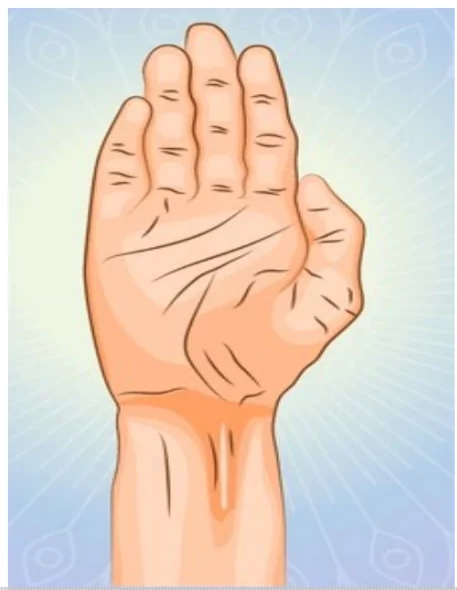
- Formation: The Abhaya mudra is typically formed with the palm of the right hand facing outward at shoulder height and the fingers pointing up.
- Occasionally, the index, second, or third finger touches the thumb, with the remaining fingers extended upward”.
- In some cases, both hands may simultaneously be raised in this posture in a “double abhaya mudra”.
- Symbolism of Abhaya Mudra in Buddhist tradition:
- Enlightenment: In Buddhist tradition, the abhaya mudra is associated with the Buddha immediately after he attained Enlightenment, symbolising the security, serenity, and compassion that arise from this profound state.
- Shakyamuni tamed a mad Elephant: The “gesture of fearlessness” also represents the moment when Shakyamuni (the Buddha) tamed a mad elephant, illustrating his ability to grant fearlessness to his followers.
- Gesture of Protection: This is why the abhaya mudra is also seen as a “gesture of protection” or “gesture of granting refuge”.
Abhaya Mudra in Hindu Religion
- Integration of Buddha: Over time, the Buddha was absorbed into the Hindu pantheon as the ninth avatar of the Puranic god Vishnu.
- Adoption of Abhaya Mudra:
- The abhaya mudra appeared in depictions of Hindu deities.
- Most commonly seen in the representations of Lord Shiva, Lord Vishnu, and Lord Ganesha.
Check Out UPSC CSE Books From PW Store
Other Mudras in Buddhism
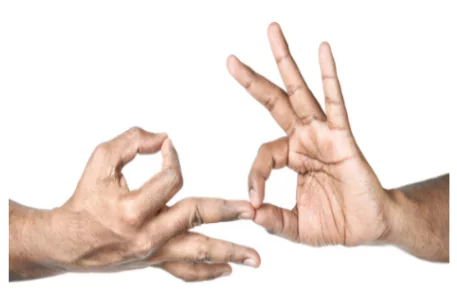
- Dharmachakra Mudra:
- Dharmachakra Mudra represents continuous flow of energy.
- Dharmachakra is a Sanskrit word which means “the wheel of dharma.”
- The mudra also symbolises kalachakra, which refers to the time cycles.
- To perform this mudra, bring the tips of the thumb and index fingers of both hands together to form a circle. Keep the remaining three fingers stretched. Place the hands at heart level with the left palm facing the heart and right palm facing outward.
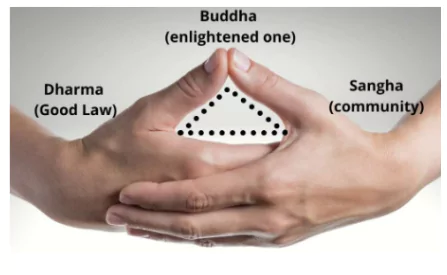 Dhyan Mudra:
Dhyan Mudra:
- The dhyāna mudrā (“meditation mudra”) is the gesture of meditation, of the concentration of the Good Law and the sangha.
- The two hands are placed on the lap, right hand on left with fingers fully stretched (four fingers resting on each other and the thumbs facing upwards towards one another diagonally), palms facing upwards; in this manner, the hands and fingers form the shape of a triangle, which is symbolic of the spiritual fire or the Three Jewels.
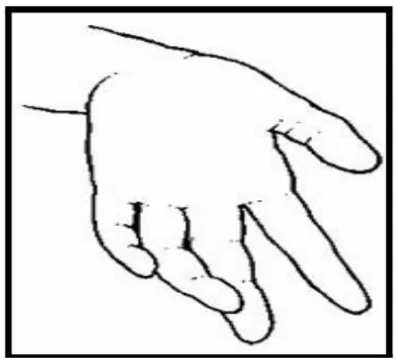 Varada Mudra:
Varada Mudra:
- The Varada mudra “generosity gesture” signifies offering, welcome, charity, giving, compassion and sincerity.
- It can be made with the arm crooked and the palm offered slightly turned up or in the case of the arm facing down the palm presented with the fingers upright or slightly bent.
- Bhumisparsa Mudra:
- Bhumispara mudra is a hand gesture, thought to be adopted by Siddhartha Gautama (Buddha) in the moment of his enlightenment.
- It depicts the story from Buddhist legend of the moment when Buddha attained complete enlightenment, with Buddha sitting in meditation with his left hand, palm upright, in his lap, and his right hand touching the earth.

Conclusion
The merging of multiple traditions, practices, and cultural influences in Hinduism influenced art and visual depictions of gods.
![]() 3 Jul 2024
3 Jul 2024



 Dhyan Mudra:
Dhyan Mudra:
 Varada Mudra:
Varada Mudra:
